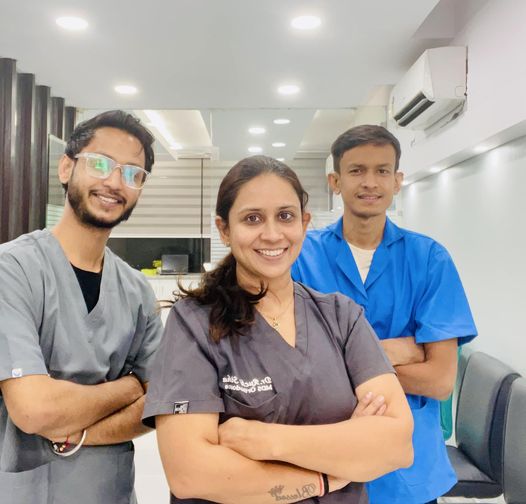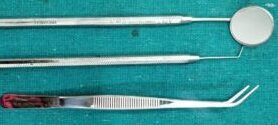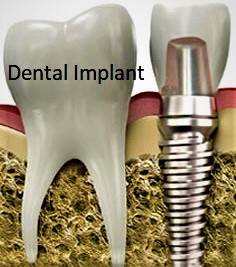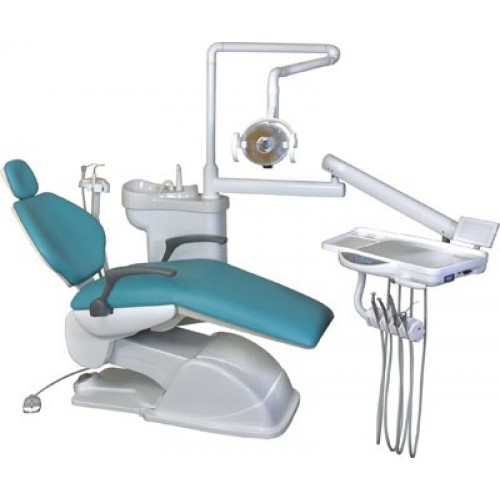Table of Contents
ToggleUnderstanding Dental Quality Check Sheets - Dr. Ruchi Saxena MDS

Dental Services - Align & Smile Dental Care NOIDA
Align & Smile Dental Care is a comprehensive dental service provider located in the bustling city of NOIDA. Our goal is to ensure our patients receive the best dental care possible, through a range of services that cater to their specific needs and desires. Our highly skilled team of dental professionals has years of experience in the industry and utilizes state-of-the-art equipment to ensure each patient leaves our office with a healthy and radiant smile.
OUR DENTAL SERVICES
Dental quality check sheets are tools used by dental professionals to ensure that they are providing their patients with the highest level of care. These check sheets typically generated at ‘Align & Smile Dental Care Noida ‘by TechConsults, cover a range of areas, including patient safety, comfort and infection prevention and control.
Our Check Sheets for Dental Quality Management, include items such as checking the sterility of instruments and equipment, monitoring the maintenance of machinery, conducting regular cleaning and disinfection of surfaces, monitoring staff training and performance, and ensuring that patients are receiving appropriate care and treatment.
The use of dental quality check sheets at ‘Align & Smile Dental Care’ NOIDA, helps to promote consistency and standardization in Dental Quality Management, and they can also help to identify areas for improvement and staff training. Dental Professionals engaged can ensure that patients receive the best possible care and achieve optimal dental health outcomes.


Maintenance Checklist for Dental Equipment / Clinic
These are the checks, but not limited to, that the team should recognize for actions on daily, weekly, monthly, and yearly basis. The checks suggested are based on experience and guidelines. The checklist must be modified with reference to the manufacturer’s suggestions and the experience gained during operations. The check points and the description are given below.
Dental Equipment Maintenance Check Sheet – List Item & Description.
1. Clean handpieces and syringes
If possible, perform these steps using an ultrasonic cleaner.
or steam sterilizer.
2. Inspect the water supply and ensure it is adequate and clean.
3. Ensure that all parts of the machine have been thoroughly cleaned prior to use.
4. Check for leaks around the unit and make sure there’s no debris lodged inside.
5. Also check for signs of corrosion, which can indicate potential problems.
6. Top up the ultrasonic cleaning tank – using a sterile container add some distilled water to help prevent mineral build-up.
7. Check the suction tubing for kinks or obstructions. Remove blockage if any.
8. Clean the dental unit and surrounding area.
Wipe down all surfaces on and around the dental unit including the floor under the sink where the machine sits.
Sanitize all equipment and surfaces by using a sanitizer solution such as hydrogen peroxide or alcohol. Make sure rinsing everything thoroughly after using each instrument.


9. Make sure all waste containers are empty and clean.
Make sure you have a place to dispose of used needles and other medical equipment safely.
Switch on the air compressor systems and master water valve
The most common cause of failure in a dental autoclave is debris built up within the steam chamber.
10. Clean equipment using disinfectant.
This includes cleaning instruments such as scalers, ultrasonic units, drills, etc., in addition to other items that may need regular cleaning, including handpieces, suction tubing, light bulbs, mirrors and chairs. Disinfectants are available over the counter from pharmacies and supermarkets.
11. Wipe down work surfaces.
Wipe all surfaces with an anti-bacterial wipe or cloth.
Turn off cylinders, if any, in use.
12. Store equipment in a dry place.
This includes any instruments that may meet saliva or blood such as drills, burs, saws, etc. They must always be stored away from direct sunlight. Dental offices often have cabinets specifically designed for storing these items.
13. Clean and lubricate valves and O-rings.
This applies to HVEs and saliva ejector valves. You would need to disassemble the parts so that you could clean all surfaces thoroughly.
14. Empty and clean ultrasonic machine.
Cleaning the machine removes any debris left over from previous surgeries. Remember to unplug the power supply before draining the solution.
15. Switch off all delivery units.
Power down your equipment and instruments including all x-rays, scalers, air polishers, vacuum, sterilizers, air compressor systems, etc.
16. Re-stock supplies as necessary
Check stock levels and restock with new items where needed. If an autoclave is being used, ensure that there is enough water available for steam generation during the sterilization cycle.
At the end of each day, it’s good practice to check your stock levels and replenish as necessary for the next day.
17. Clean steam sterilizer
The most common cause of failure is debris building up within the steam chamber which can lead to clogging and overheating. Ensure adequate ventilation so no smoke is produced.
-
Clean interior and exterior of sterilizer(s), including reservoir. Check autoclave safety valve by pulling on the ring with pliers (it should spring back).
-
Check sterilizer filters and perform a spore test.
-
Verify sterilizer is level.
18. Clean and lubricate suction components.
Devices such as HVE and Canister need to be disassembled and cleaned regularly with vacuum line cleaners. The tubing and delivery unit traps should also be checked periodically for leaks or signs of wear and tear – replacement if necessary.
19. Check the electrical cords for wear and tear.
Check the length of any cord that connects your instruments together.


20. Check oil on compressors and drain tank.
-
Check chairside trap screens and lid O-rings for wear and replace if necessary. Be certain to securely replace the lid of the trap afterward.
-
Check and replace or clean out central vacuum and main waterline filters.
21. Other Maintenance Points
-
Perform extended cleaning of X-ray processor per manufacturer’s recommendations.
-
A special cleaning solution may be required as well.
-
Check/clean plaster trap.
-
Check emergency resuscitation equipment.
-
Lubricate joints in operating lights, sterilizer door hinges, air/water syringe buttons, and other similar items around the office.
-
Clean Pan or Cephas X-ray screens with a screen cleaner.
-
Using heat-resistant PPE, check sterilizer safety valve while under pressure … and check sterilizer door for plumb.
-
Check air and water filters in junction boxes.
22. Check HVEs and saliva ejector valves for wear and tear.
Check the valve body for any cracks or damage which may allow germs into the system; remove the rubber gasket around the valve stem and inspect it for holes or tears in the material.
23. Inspect equipment for wear and tear.
24. Maintain x-ray intensifying screens.
It’s important to maintain a quality image on your x-rays. Screens are cleaned using an intensifying screen cleaner, while cassettes can be wiped down with alcohol swabs.
25 Replace your filters.
Filters are an important part of maintaining a healthy environment within the office. They should be changed monthly depending on how often they become clogged with debris from patients’ mouths. The manufacturer’s instructions must always be followed when replacing these filters.
26. Check intensity of curing light
If you notice that the light is too bright and causes discomfort, it may indicate that the bulb needs replacement. Too much heat during polymerization could also cause damage to the teeth; if this occurs, then the dentist should replace the lamp immediately.
27. Check sterilizer pressure relief valve.
This device allows air or gas in the chamber to escape as necessary so that the vaporized solvent does not build up inside the unit until the time comes for its use. It can easily become clogged with debris from dental procedures, which would prevent proper functioning. Therefore, it is important to check on a regular basis whether any residue has built up around the vent opening.
28. Make sure that all handpiece connections are tight and free from debris.




29. Calibrate equipment.
Periodic calibration is needed for some instruments such as ultrasonic scalers and lasers because they are sensitive apparatus whose accuracy depends upon their precise alignment with respect to each other. They may also be affected by temperature and humidity changes as well as ageing of their components.
Calibration ensures that all of these devices work at maximum efficiency throughout their useful life span. Other dental equipment that requires annual calibration are x-ray equipment, intraoral cameras, light curing units, etc.
When in doubt whether your equipment needs calibration, consult the manufacturer’s equipment specialist team.
29. Check sterilizer door.
Door seals on the sterilizer can become brittle over time due to exposure to steam or moisture. This causes them to crack and leak which results in contamination of the interior environment of the instrument tray. The solution is to replace any cracked seal immediately.
30. Check handpiece delivery system.
Handpieces have rubber tubing attached to them with an airtight connection. If this connection fails, then there will be no pressure inside the tube causing fluid to drip out when used. Check that all connections are tight and free from debris. Also check that both ends of the tubing are sealed tightly against the handpiece by pressing down firmly.
31. Check intra-oral x-rays for drift.
Drift occurs when the radiation beam does not stay on the same spot as before but moves slightly towards or away from the patient’s mouth. It can occur if the machine has been moved around during use.
32. Check air abrasion units.
The unit should have two small tubes at one end which allow water to flow through them, so you need to make sure they are periodically topped up to prevent drying in between uses. Air abraded surfaces need to dry completely after each use. The unit needs to be cleaned and filled with fresh water every 6 months.
33. Check oil filters on the vacuum system.
If this gets clogged it is recommended that you change them at least once per year.
34. Other Important Checks
-
Have fire extinguisher(s) inspected.
-
Observe a complete sterilization cycle, looking for any signs of malfunction, such as a steam leak.
-
Conduct staff OSHA training.
-
Review emergency procedures with staff—how to handle patient emergencies as well as what to do in case of fire, etc.
-
Have X-ray equipment inspected, calibrated, and certified (requirements vary—maybe as infrequently as once every five years).
